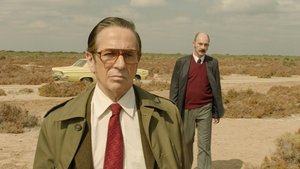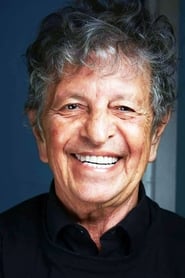Cast
View AllCrew
Director
- Benjamín Naishtat
Producer
- Jamal Zeinal Zade
- Emmanuel Chaumet
- Marleen Slot
- Ingmar Trost
- Rachel Ellis
- Dan Wechsler
- Bárbara Sarasola-Day
- Federico Eibuszyc
Reviews
Danybur
Through the story of a lawyer (led by Darío Grandinetti) facing an unexpected event, Benjamín Naishtat articulates a powerful political policeman and a true sociological essay on the miseries of a town in an unnamed province of Argentina in 1975 and its apparent normality at a turbulent stage in its history. And with great cinematography.
It is 1975. Claudio (Darío Grandinetti) is the Doctor, a prestigious lawyer from a town in an unnamed province of Argentina, married to Susana (Andrea Frigerio) and with a teenage daughter. A tense incident with a stranger (Diego Cremonesi) in a town restaurant will be the first in a series of events that will call into question the Doctor's calm.
Actually, the first scene of the film is another, a powerful fixed shot over a house, in a scene of enormous eloquence. For those who do not know, or do not remember, in 1975 Isabel Perón ruled and Argentina was already devastated by the kidnappings and murders of the Triple A (Alianza Anticomunista Argentina), a parapolice organization linked to the Government, in a true advance of what that it would be state terrorism established by the civil-military dictatorship that overthrew Isabel in 1976.
Red is a remarkable and disturbing film. Its plot suffers an apparent drift by situations that seem disconnected but that in reality are integrated into a powerful and implacable X-ray of an era: violence (sometimes left out of the field), disappearances, dispossession, looting of the victims, the swindle, the silence, the imposture, the impunity. But all under a layer of apparent normality and within the framework of a province intervened to "restore" it.
Naishtat's film could be defined as a sociological and political black cop. Each scene is a necessary note (and never underlined) on the general picture, including the successful scene on a beach in Mar del Plata.
From the formal point of view, the filmic recreation of the time is remarkable, with that tone between faded and sepia that dominates photography and its red titles. There is a great use of still shots and beautiful wide shots in desert locations.
Grandinetti's very good performance, while the apparent over-acting of a character who later appears in charge of Alfredo Castro (the actor from I'm afraid of a bullfighter), also has its justification.
The school device could not be absent in this story, when a teacher (Susana Pampín) rehearses with Claudio's daughter and other classmates the dance Los Salvajes from the opera Las Indias Galantes by Rameau (a luxury of the soundtrack) for an act school and what he says to put them in position for the scene, in what constitutes a disturbing stagin
Dec 22, 2020
Thematic Analysis
As a dramatic work, Rojo examines complex human relationships and emotional struggles against the backdrop of contemporary challenges that mirror our own experiences. The character development particularly stands out, offering viewers a chance to reflect on their own life journeys.
Director Benjamín Naishtat brings their distinctive visual style to this film, continuing their exploration of themes seen in their previous works while adding new elements. Their approach to character development and emotional depth creates a viewing experience that rewards close attention.
Released in 2018, the film exists within a cultural context that continues to evolve with our understanding of its themes. Its reception demonstrates the diverse reactions to its artistic choices and its place in cinema history.
Did You Know?
- The production of Rojo took approximately 17 months from pre-production to final cut.
- The final cut of the film runs for 106 minutes, though the director's initial assembly was reportedly 126 minutes long.
- The cast underwent specialized training for 4 weeks before filming began.
- Several scenes were filmed in multiple locations to capture the perfect setting.
- Some visual effects sequences took up to 3 months to complete.
Historical Context
- In 2018, when this film is released:
- Streaming services were revolutionizing film and television consumption.
- Climate change awareness was becoming a central global concern.
- Streaming platforms were disrupting traditional distribution models and changing how audiences consumed films.
How This Film Stands Out
While Rojo shares thematic elements with other films in its genre, it distinguishes itself through its unique approach to storytelling, visual style, and character development.
Unlike The Scorpion King, which takes a more conventional approach to its subject matter, Rojo offers a fresh perspective through its innovative visual language and narrative structure.
While films like Donnie Brasco and 2 Days in the Valley explore similar territory, Rojo stands apart through its deeper exploration of its central themes and more complex characterization.
This film's unique contribution to cinema lies in its bold artistic choices and willingness to challenge viewer expectations, making it a valuable addition to its genre.
Details
- Release Date: October 26, 2018
- Runtime: 1h 46m
- Revenue: $557,092
















